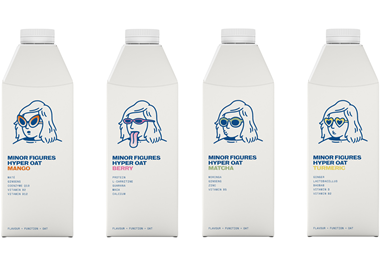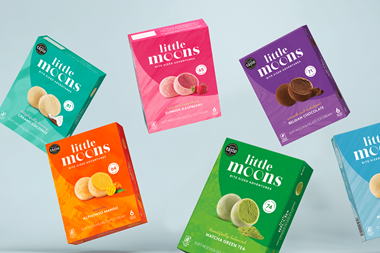Defra has come under fire from the dairy industry for suggesting consumers should cut their dairy consumption by 30% in order to meet healthy eating guidelines.
Its Food Statistics Pocketbook 2012, published last week, compares the amount of food bought by UK households in 2010 (the most recent year for which statistics are available) with the healthy eating ideal of the Eatwell plate, which recommends guideline amounts for five food groups.
Defra concluded UK households were buying “too much milk and dairy foods - need to reduce by around 30%”.
This was met with disbelief by the industry.
Dairy Council director Judith Bryans said Defra’s methodology of matching purchasing data against Eatwell guidelines was unsound and warned cutting dairy by 30% would have a negative impact on the UK population’s intake of nutrients.
This was echoed by Jim Begg, director general of Dairy UK, who said government statistics were an important source of data for the industry and for consumers, “but they’ve got to be properly used and interpreted. In this case, after checking, I don’t believe they have.”
NFU chief dairy adviser Rob Newbery added dairy was “a vital source of nutrition in everyone’s diet.”
It is understood there is some consternation in Defra’s dairy team about how the guidance was phrased. However, Defra would not comment directly on the advice, saying only the government was “absolutely committed” to helping the industry take advantage of “the massive opportunities for growth” in the UK and abroad. “We’ll also be investing more than £7.5 million to help businesses improve infrastructure and access emerging markets to turn around our £1.2 billion dairy trade deficit,” a spokesman added.
Close menu
- Home
- Retail & Wholesale
-
Products & Suppliers
- Back to parent navigation item
- Products & Suppliers
-
Product Categories:
- Back to parent navigation item
- Product Categories:
- Alcoholic drinks
- Bakery
- Cereals & breakfast
- Cheese
- Chicken & poultry
- Chocolate
- Confectionery
- Crisps, nuts & snacks
- Dairy
- Fish
- Fresh produce
- Frozen
- Household
- Meat
- Own Label
- Sauces & condiments
- Seasonal
- Soft drinks
- Vaping
- Vegan & plant-based
- World foods
- Suppliers
- People
- Reports & Data
-
Topics A-Z
- Back to parent navigation item
- Topics A-Z
-
Popular topics:
- Back to parent navigation item
- Popular topics:
- Cost of living crisis
- Crime
- Deposit Return Schemes
- Finance
- Government & Regulation
- Health
- Inflation
- Loyalty
- Marketing
- Mergers & Acquisitions
- New Product Development
- Sourcing
- Supply chain
- Sustainability & environment
- Technology
- Ultra Processed Foods
- Vaping
- A-Z all topics
- Content by type:
- Events
- Subscribe now
Sign in to comment on this article
Not logged in before? Register for FREE guest access today.
You will be able to:
- Read more stories
- Receive daily newsletters
- Comment on stories
Advert
Related articles
More from News
Most popular
Latest
© William Reed Ltd 2025. All rights reserved.
Registered Office: Broadfield Park, Crawley RH11 9RT. Registered in England No. 2883992. VAT No. 644 3073 52.
Website Terms | Privacy Notice | Cookie Statement | Cookie Preferences | William Reed and AI
Registered Office: Broadfield Park, Crawley RH11 9RT. Registered in England No. 2883992. VAT No. 644 3073 52.
Website Terms | Privacy Notice | Cookie Statement | Cookie Preferences | William Reed and AI
Site powered by Webvision Cloud





































No comments yet